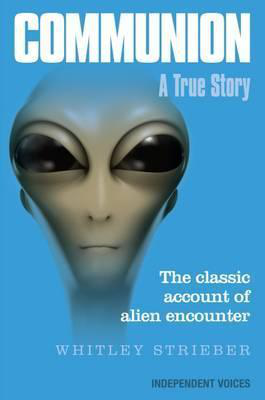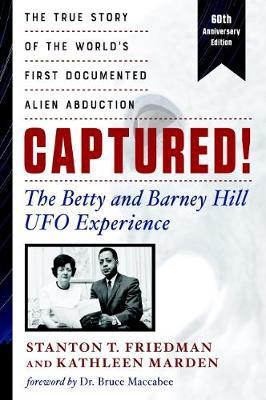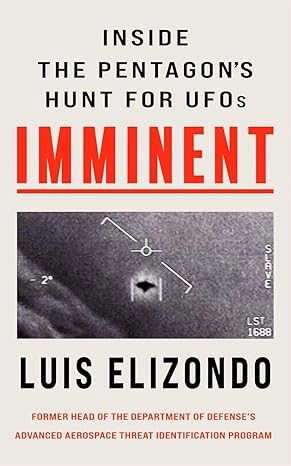Declassified CIA Files Detail Remote Viewing of Alleged Alien Bases
Alien Life & UFO/UAPs
Monday 5th, May 2025
4 minute read.
A set of declassified CIA documents has drawn renewed public attention after describing Cold War-era experiments involving “remote viewing” sessions that allegedly identified extraterrestrial bases on Earth and elsewhere in the solar system.
The sessions, conducted during the 1970s and 1980s under a top-secret U.S. intelligence project known as the STARGATE programme, were designed to test whether individuals claiming psychic abilities could access information from distant or hidden locations.
One such report, titled “Description of Personnel Associated ‘ET’ Bases”, was produced in 1987 and later released to the public in 2000. It outlines a remote viewing session in which a test subject was given unknown targets and asked to describe what they perceived. The subject reported seeing bases in Alaska, a location south of the equator (possibly South America or Africa), and on Titan, Saturn’s largest moon.
“So far have run into three types of entities associated with bases at various locations within the solar system,” the viewer wrote.
The descriptions varied in detail. At one site believed to be Mount Hayes in Alaska, which stands at approximately 2.4 kilometres tall, the viewer reported perceiving “two types of entities associated with this site.” One was seated at a circular console featuring a screen-like object, while another was carrying out an unspecified task in the background. The viewer added, “The entity at the console appeared to be in human form but lacked definitive features”, and said the being “appeared to acknowledge their presence and invited them to observe its work.”
The base on Titan was described differently. The viewer saw no alien life, but rather what appeared to be human personnel. “An attractive female” was noted among the staff. “Two male technicians seated at a control panel” were observed, with a woman “with brown hair and wearing a pale green lab coat” standing behind them in what was described as a supervisory role. The viewer added that the individuals “looked no different than native earthlings.”
In a third location, identified only as being “south of the equator” and possibly in either South America or Africa, the viewer again reported seeing two distinct entities. “The first had a very large, rounded-shaped head on a slender neck... very unhuman appearance... almost robot-like... unable to make contact with this being”, the report stated. The second entity “seemed friendly enough and appeared to be aware of my presence,” despite having no hair or distinct facial features.
The STARGATE programme was one of several covert initiatives operated by the CIA during the Cold War to explore the use of alleged psychic abilities in intelligence gathering. Participants in these sessions often sketched what they “saw” and recorded their impressions in brief notes.
Other projects under the same umbrella included operations such as Sun Streak, which tasked a viewer with locating the biblical Ark of the Covenant - reportedly claimed to be hidden somewhere in the Middle East.
One of the more well-known figures involved in these experiments was Joe McMoneagle, referred to by some as the CIA’s “Remote Viewer No. 1”. Speaking in March on the programme American Alchemy, McMoneagle described one particular session in which he was handed coordinates and asked to describe what he saw. “I started getting an image of human beings that were trapped in a place where the atmosphere was turning bad”, he recalled. “It was obvious these people were dying for some reason - but they were humans. They were just twice our size”.
The coordinates were later revealed to match a location on Mars, dated approximately 1,000,000 BC, as written on a white card used in the session. McMoneagle also claimed to see a “giant pyramid on Mars, larger than Egypt’s Great Pyramid of Giza,” containing what he described as “monster rooms”.
While the documents offer insight into the unconventional methods employed during the Cold War, experts caution that materials such as these should be approached with care. Intelligence documents may include unverified claims or speculative content, and in some cases, could reflect deliberate misinformation or disinformation, either to mislead adversaries or obscure true objectives.
The STARGATE programme was officially terminated in 1995 following internal and external evaluations that concluded remote viewing was scientifically unreliable and operationally ineffective. Although the declassified material continues to intrigue UFO researchers and conspiracy theorists, there is no confirmed evidence to substantiate the existence of alien bases as described in the sessions.
The sessions, conducted during the 1970s and 1980s under a top-secret U.S. intelligence project known as the STARGATE programme, were designed to test whether individuals claiming psychic abilities could access information from distant or hidden locations.
One such report, titled “Description of Personnel Associated ‘ET’ Bases”, was produced in 1987 and later released to the public in 2000. It outlines a remote viewing session in which a test subject was given unknown targets and asked to describe what they perceived. The subject reported seeing bases in Alaska, a location south of the equator (possibly South America or Africa), and on Titan, Saturn’s largest moon.
“So far have run into three types of entities associated with bases at various locations within the solar system,” the viewer wrote.
The descriptions varied in detail. At one site believed to be Mount Hayes in Alaska, which stands at approximately 2.4 kilometres tall, the viewer reported perceiving “two types of entities associated with this site.” One was seated at a circular console featuring a screen-like object, while another was carrying out an unspecified task in the background. The viewer added, “The entity at the console appeared to be in human form but lacked definitive features”, and said the being “appeared to acknowledge their presence and invited them to observe its work.”
The base on Titan was described differently. The viewer saw no alien life, but rather what appeared to be human personnel. “An attractive female” was noted among the staff. “Two male technicians seated at a control panel” were observed, with a woman “with brown hair and wearing a pale green lab coat” standing behind them in what was described as a supervisory role. The viewer added that the individuals “looked no different than native earthlings.”
In a third location, identified only as being “south of the equator” and possibly in either South America or Africa, the viewer again reported seeing two distinct entities. “The first had a very large, rounded-shaped head on a slender neck... very unhuman appearance... almost robot-like... unable to make contact with this being”, the report stated. The second entity “seemed friendly enough and appeared to be aware of my presence,” despite having no hair or distinct facial features.
The STARGATE programme was one of several covert initiatives operated by the CIA during the Cold War to explore the use of alleged psychic abilities in intelligence gathering. Participants in these sessions often sketched what they “saw” and recorded their impressions in brief notes.
Other projects under the same umbrella included operations such as Sun Streak, which tasked a viewer with locating the biblical Ark of the Covenant - reportedly claimed to be hidden somewhere in the Middle East.
One of the more well-known figures involved in these experiments was Joe McMoneagle, referred to by some as the CIA’s “Remote Viewer No. 1”. Speaking in March on the programme American Alchemy, McMoneagle described one particular session in which he was handed coordinates and asked to describe what he saw. “I started getting an image of human beings that were trapped in a place where the atmosphere was turning bad”, he recalled. “It was obvious these people were dying for some reason - but they were humans. They were just twice our size”.
The coordinates were later revealed to match a location on Mars, dated approximately 1,000,000 BC, as written on a white card used in the session. McMoneagle also claimed to see a “giant pyramid on Mars, larger than Egypt’s Great Pyramid of Giza,” containing what he described as “monster rooms”.
While the documents offer insight into the unconventional methods employed during the Cold War, experts caution that materials such as these should be approached with care. Intelligence documents may include unverified claims or speculative content, and in some cases, could reflect deliberate misinformation or disinformation, either to mislead adversaries or obscure true objectives.
The STARGATE programme was officially terminated in 1995 following internal and external evaluations that concluded remote viewing was scientifically unreliable and operationally ineffective. Although the declassified material continues to intrigue UFO researchers and conspiracy theorists, there is no confirmed evidence to substantiate the existence of alien bases as described in the sessions.



